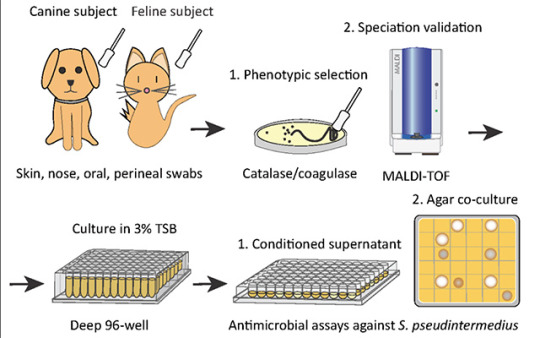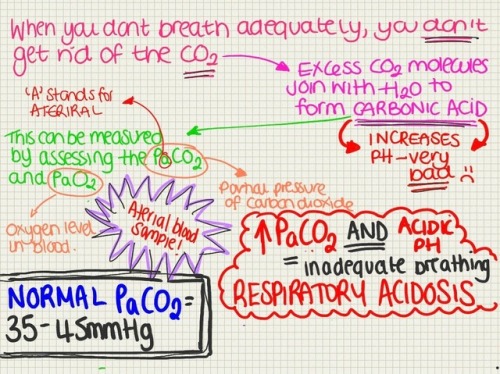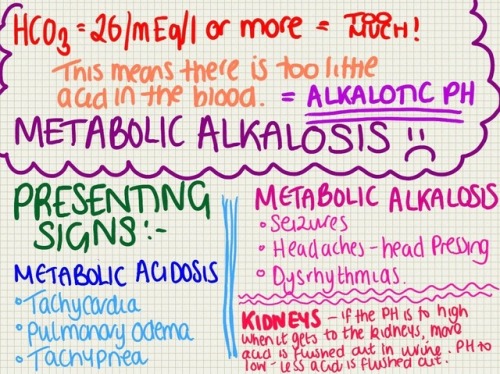#veterinary science
BIOCHEMISTRY BLOOD TESTING
Biochemistry blood test measures the levels of chemical substances carried in the blood. This type of test allows us to evaluate the how well the liver and kidneys are working and how much fat and sugar is circulating in the bloodstream.
Blood Glucose
When carbohydrates are eaten they are broken down and stored in the Liver as Glycogen until the animal needs energy where it is then converted to glucose and transported around the body. We use blood glucose as a monitor of metabolism and physiology.
Normal BG (Canine) - 5.6 to 13.9mmol/L
Normal BG (Feline) - 5.6 to 16.7mmol/L
INCREASED BG - Diabetes Mellitus is indicated however it is recommended that the urine is also checked for Glucose as if present this means the kidneys have reached their threshold and Diabetes is very likely. Note that cats can have stress induced hyperglycemia and so a diagnosis of diabetes should not be made on a single BG reading.
DECREASED BG - Patients that are sick and deliberated often have hypoglycemia. but puppies who have been starved for procedures can also suffer from a low BG. In addition to this hunting breeds that have been working hard for a prolonged time can also suffer from a low BG.
Bun Urea Nitrogen (BUN)
BUN is the by product produced when Proteins are broken down and used within the body. This by-product is excreted by the Kidneys in the urine.
INCREASED BUN - This would mean the kidneys are not working sufficiently and could be an indicator of kidney disease or kidney obstruction that is preventing urine reaching the bladder and therefore build up in the Kidney. Heart disease causing poor circulation to the kidneys could also be a cause of increased BUN.
DECREASED BUN - As the liver breaks down Protein a lower level of BUN could indicate that the liver is not working as well as it should and isn’t breaking down protein as well as it should.
Creatinine (CREA)
Creatinine is solely filtered out of the blood by the kidneys.
INCREASED CREA - Impaired Kidney function
Calcium (CAL)
Calcium is a mineral that is found at a consistent level within the blood. It’s needed for muscle and nerve function and without it death can occur.
INCREASED CAL - Some types of cancers and medications can cause an increase in Calcium.
DECREASED CAL - Some animals can experience low calcium levels during pregnancy, post partum and during lactation. This condition is called Eclampsia.
Total Protein (TP)
The measurement of two blood protein molecules: Albumin and Globulins. Albumin is produced by the Liver and levels are often decreased when the animal is going through a period of poor nutrition. Chronic infectious disease will also cause low Albumin levels.
Globulins include immunoglobulins which are used by the body to fight infection. Certain diseases such as FIP can cause an increase in this.
Bilirubin (BIL)
Haemoglobin is found inside red blood cells, it carries oxygen to tissues around the body. When RBC’s die or are destroyed and the haemoglobin is broken down, bilirubin is a by product of this process which is then excreted by the Liver.
INCREASED BIL - An increase can be seen when the Liver is diseased and is can’t clear the bilirubin efficiently. A liver or bile duct obstruction can cause bilirubin to build up thus resulting in high levels in the blood so this should also be considered.
Alkaline Phophatese (ALKP)
This is an enzyme used to assist with various chemical reactions within the body. The normal levels vary from animal to animal but in dogs, an increase could indicate some forms of cancer or Liver disease.
Atanine Amino Transferase (ALT)
This is an important enzyme for adequate Liver function. An increase in this enzyme would indicate that Liver cells are breaking down, this could be because of cancer, cirrhosis, or liver congestion due to heart failure.
Cholesterol (CHOL)
INCREASE CHOL - Inadequate Thyroid function
DECREASE CHOL - The animal has been through a period of starvation or is not having their nutritional requirements met.
SODIUM: POTASSIUM RATIO
These levels are almost always interpreted together. Their levels can be affected if there is a disease of the adrenal glands, heart, or kidneys.
INCREASED RATIO - Not clinically significant
DECREASED RATIO - Primary Hypoadrenocorticism
When evaluated on their own:
INCREASED K+ - Acute kidney failure, Chronic kidney disease or Addisons disease.
DECREASED K+ - Chronic kidney disease, or lost through vomiting and diarrhoea.
INCREASED SODIUM - Dehydration through vomiting and diarrhoea
DECREASED SODIUM - caused by severe vomiting and diarrhoea or can be seen if the patient has been on diuretics.
I’m sorry this has taken so long to do and that it’s so rushed :(
Post link
Full disclaimer!!! This is acid base in its most simplest terms - please don’t rely on this as a sole source of info.
Hopefully it helps someone! it’s a couple of years old i went digging for it today after trying to explain it to a student today at work.
Post link

Researchers identify a bacteria on healthy cats that produces antibiotics against severe skin infections; the findings may lead to new bacteriotherapies for humans and their pets
Researchers at University of California San Diego School of Medicine used bacteria found on healthy cats to successfully treat a skin infection on mice. These bacteria may serve as the basis for new therapeutics against severe skin infections in humans, dogs and cats.
The study, published in eLife on October 19, 2021, was led by Richard L. Gallo, MD, PhD, Distinguished Professor and chair of the Department of Dermatology at UC San Diego School of Medicine, whose team specializes in using bacteria and their products to treat illnesses — an approach known as “bacteriotherapy.”
Skin is colonized by hundreds of bacterial species that play important roles in skin health, immunity and fighting infection. All species need to maintain a diverse balance of healthy skin bacteria to fight potential pathogens.
“Our health absolutely depends on these ‘good’ bacteria,” said Gallo. “They rely on our healthy skin to live, and in return some of them protect us from ‘bad’ bacteria. But if we get sick, ‘bad’ bacteria can take advantage of our weakened defenses and cause infection.”
This is the case with methicillin-resistant Staphylococcus pseudintermedius (MRSP), a bacterium commonly found on domesticated animals that becomes infectious when the animals are sick or injured. MRSP is an emerging pathogen that can jump between species and cause severe atopic dermatitis, or eczema. These infections are common in dogs and cats, and can also occur in humans, though rates of human infection vary around the world. As its name suggests, MRSP is resistant to common antibiotics and has been difficult to treat in clinical and veterinary settings.
To address this, researchers first screened a library of bacteria that normally live on dogs and cats and grew them in the presence of MRSP. From this, they identified a strain of cat bacteria called Staphylococcus felis(S. felis) that was especially good at inhibiting MRSP growth. They found that this special strain of S. felis naturally produces multiple antibiotics that kill MRSP by disrupting its cell wall and increasing the production of toxic free radicals.
“The potency of this species is extreme,” said Gallo. “It is strongly capable of killing pathogens, in part because it attacks them from many sides — a strategy known as ‘polypharmacy.’ This makes it particularly attractive as a therapeutic.”
Bacteria can easily develop resistance to a single antibiotic. To get around this, S. felis has four genes that code for four distinct antimicrobial peptides. Each of these antibiotics is capable of killing MRSP on their own, but by working together, they make it more difficult for the bacteria to fight back.
Having established how S. felis kills the MRSP, the next step was to see whether it could work as a therapy on a live animal. The team exposed mice to the most common form of the pathogen and then added either S. felis bacteria or bacterial extract to the same site. The skin showed a reduction in scaling and redness after either treatment, compared with animals that had no treatment. There were also fewer viable MRSP bacteria left on the skin after treatment with S. felis.
Next steps include plans for a clinical trial to confirm whether S. felis can be used to treat MRSP infections in dogs. Bacteriotherapies like this one can be delivered via topical sprays, creams or gels that contain either live bacteria or purified extract of the antimicrobial peptides.
Pictured above: To identify candidates for a new bacteriotherapy against skin infection, researchers first screened various bacteria from dogs and cats and co-cultured them with S. pseudintermedius in liquid and agar antimicrobial assays.
“Cat Bacteria Treats Mouse Skin Infection, May Help You and Your Pets As Well”
Burr Tongue, or The Weed That Choked the Dog
Burr Tongue, or The Weed That Choked the Dog
It is said that the inspiration for Velcro came when Swiss inventor, George de Mestral, was removing the burrs of burdock from his dog’s coat, an experience we had with Kōura just days after adopting her. I knew that common burdock was found on our property, and I had made a point to remove all the plants that I could easily get to. However, during Kōura’s thorough exploration of our yard, she…

drferox said: I will be thoroughly unprepared if that ever happens. If you studied at unimelb you might have been in the same year level as my recent grad vet.
(holy shit, hi!)
I studied in Adelaide, so nope on that count. But I’ve gotten to know a few unimelb graduates in my year equivalent and below through another recent grad at my clinic.
If we ever do meet in person I promise to try not to be super weird about the internet thing. However I may have to drop in a “thanks for all the advice” somewhere.








